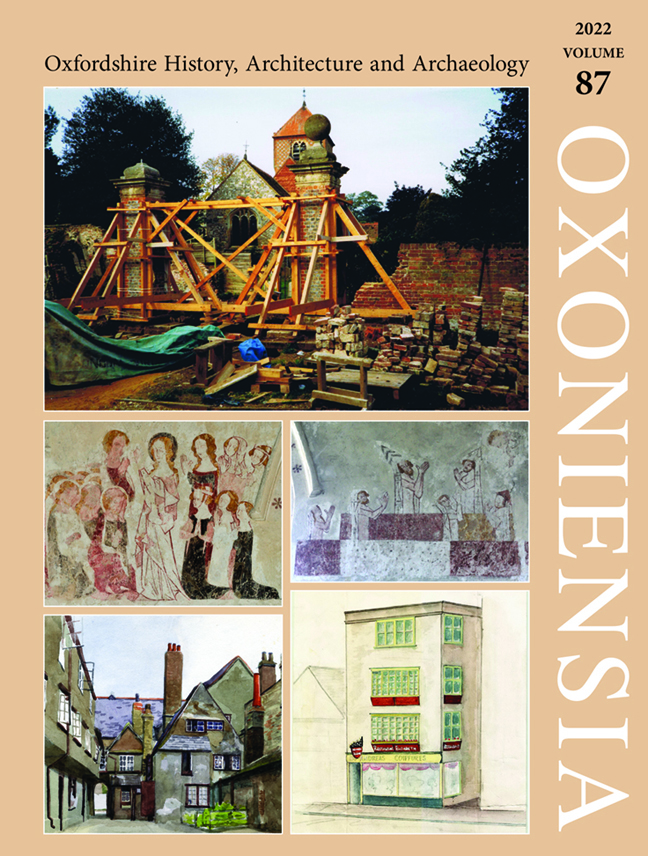Archaeological Work in Oxfordshire, 2021
Published online by Cambridge University Press: 17 February 2024
Summary
The county archaeological team secured funding for two years to recruit a third planning archaeologist and an assistant archaeologist. Victoria Green will act as planning archaeologist mainly dealing with Cherwell, and Robbie Luxford, as assistant archaeologist, is helping the HER Officer as well as providing support for the advisory side of the team. These posts have been funded as part of the Growth Deal in order to ensure that the team has the capacity to cope with the increase in work related to the delivery of a number of strategic infrastructure schemes.
Despite being short staffed, the team continued to deal with a considerable level of planning casework and was consulted on 1,720 planning applications in 2021, including 415 major schemes. We asked for archaeological work to be carried out for 396 of these applications.
SELECTED PROJECTS
Cornwell Farm, Tetsworth
A trenched evaluation was undertaken by AOC Archaeology at Cornwell Farm, Tetsworth in advance of proposals for a solar farm. The evaluation identified the presence of archaeological remains dating to the Iron Age and Romano-British periods, primarily concentrated in Field 2 and representing a continuation of settlement and occupation activity previously recorded on the site by work associated with the Aylesbury to Chalgrove gas pipeline (Site 32, Cornwell Copse). Further investigation is proposed.
Bowling Green Farm Quarry, Faringdon
Phase 6 of the ongoing archaeological mitigation was undertaken on the Chinham Farm Extension at Bowling Green Farm Quarry by TVAS. Archaeological recording revealed a low volume of features, these characterised by a small cluster of eight pits with a small number of outliers. The pit cluster itself contained a dense group and range of finds with two radiocarbon dates confirming that it represents a relatively short-lived use of the site in the eighth to seventh century BC. An especially concentrated deposit of pottery vessels in particular suggests the filling of the pits was as a result of feasting. No associated structural remains were present to indicate permanent settlement and the recorded evidence may indicate that some occasion may have been celebrated as a one-off event.
Crab Hill (Junction Works), Wantage
OA undertook detailed mitigation across the area of a cropmark enclosure identified to extend across the A417 to the east of Crab Hill. The inner circuit of the enclosure ditch was dated to the Bronze Age.
- Type
- Chapter
- Information
- Oxoniensia , pp. 451 - 454Publisher: Boydell & BrewerPrint publication year: 2022

